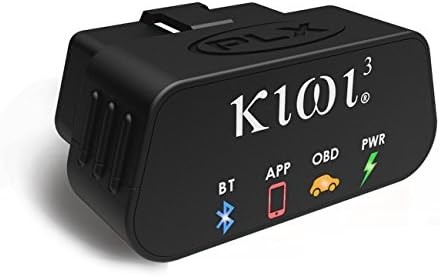For Ford F250 owners and DIY enthusiasts, having the right tools at home can save time and money. When it comes to vehicle diagnostics, an OBD2 scanner is invaluable. Many owners look to online forums for advice, seeking real-world recommendations. This article dives into a user’s experience with an OBD2 scanner setup that’s often discussed in forums, particularly for vehicles like the 2018 Ford F250.
One popular combination for home mechanics is the Kiwi3 OBD2 Bluetooth dongle and the Torque Pro app for Android. While not the cheapest option on the market, the Kiwi3 is praised for its wide protocol support and fast data rate (41k). This speed is beneficial when you need quick and accurate readings from your vehicle’s computer.
 Kiwi 3 Bluetooth OBDII Diagnostic Scan Tool for iOS and Android
Kiwi 3 Bluetooth OBDII Diagnostic Scan Tool for iOS and Android
The user highlights the versatility of the Torque Pro app, which is available for a small fee. It works seamlessly with the Kiwi3 and offers a significant step up from the free Torque Lite app. A key feature of Torque Pro is its support for PID (Parameter ID) packages. These packages are crucial because they translate the error codes and sensor data from your vehicle’s computer into understandable information. Different car manufacturers use different codes, so having manufacturer-specific PID packages ensures accurate diagnostics. Torque Pro includes packages for brands like GM, Ford, and Nissan, with the Ford package notably supporting diesel engines, a relevant feature for F250 owners.
Setting up the Torque Pro app is straightforward. When adding a gauge to the dashboard within the app, you are presented with a list of parameters to monitor, such as voltage and coolant temperature. After a short wait, the parameters supported by your vehicle’s ECM (Engine Control Module) will be highlighted in green, displaying real-time data. It’s important to note that not all parameters in the PID file will be supported by every vehicle. Older vehicles might offer fewer data points compared to newer models. For example, a user mentions getting more data from a 1999 Ford van compared to a 1997 Thunderbird, illustrating that OBD2 compliance doesn’t guarantee support for every possible parameter.
A common frustration, as shared by the user, is the lack of oil pressure data support via the ECM in some Ford vehicles. Even though a gauge might be present on the dashboard (as in the user’s van), it doesn’t necessarily mean this data is accessible through the OBD2 port. This is described as “a Ford thing,” suggesting it’s a known limitation within the Ford ecosystem for certain models and years.
Beyond real-time monitoring, Torque Pro (and Torque Lite) can also read and clear diagnostic trouble codes (DTCs). A crucial piece of advice from mechanics is to never clear codes while the engine is running. While reading codes with the engine running is generally safe, clearing them under these conditions can potentially cause issues in some vehicles. It’s always recommended to err on the side of caution and follow established best practices when dealing with vehicle error codes.
For Ford vehicles, OBD2 compliance is generally standard for models from 1996 onwards. However, as highlighted earlier, OBD2 compatibility doesn’t equate to comprehensive data access for every parameter. The range of supported parameters depends on the specific vehicle’s ECM capabilities.
In conclusion, for 2018 Ford F250 owners seeking a reliable OBD2 scanner for home use, the Kiwi3 and Torque Pro combination is a well-regarded option, often recommended in online forums. It offers broad protocol support, fast data rates, and comprehensive diagnostic features through PID packages. While there might be limitations depending on the specific vehicle and parameters supported, this setup provides a powerful tool for DIY diagnostics and vehicle maintenance. Remember to always consult your vehicle’s service manual and online forums for model-specific advice and best practices when using OBD2 scanners.